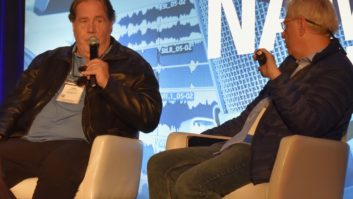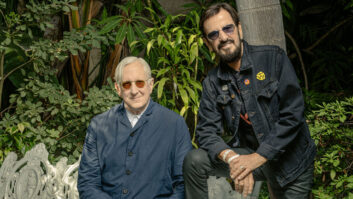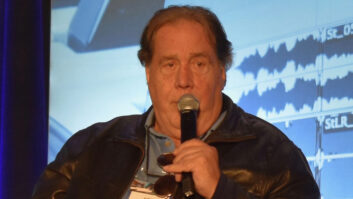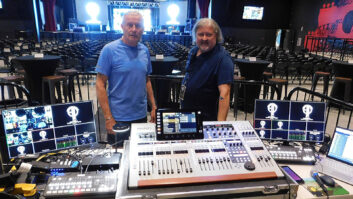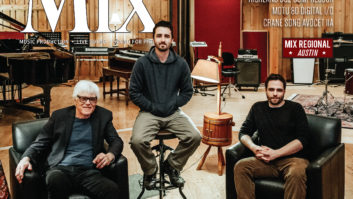Whether they’re using Apple Garageband or a full-fledged DAW production studio in the basement, ever-increasing numbers of musicians are recording themselves at home these days. Aiming to aid at least some of them when it comes to making heads or tails of how to record themselves–or track in a pro facility–comes The Recording Guitarist (Hal Leonard) by Jon Chappell.

Newly updated and revised, the book is aimed at relative recording novices, working its way through the process, from preparation (how to pick the right amps and instruments) to basics such as miking techniques and doubling tracks, to more advanced concepts like re-amping. All along, the book is littered with advice from the likes of mega-producer Phil Ramone and guitar legends like Alex Lifeson, Al Di Meola and Carl Verheyen.
Long passages explain the benefits of using various types of guitars (Flat-top steel string guitars, arch tops, etc.) and a rundown of useful stuff to bring (capos, winders, tuners and so forth). Guitar amp miking is covered extensively as well, with plenty of lively illustrations and diagrams to clarify things. By necessity having to cover a lot of ground, some chapters explain a lot, yet don’t feel particularly in-depth, such as the appropriately titled “Multitrack Recording: Four, Eight and Beyond,” though its successor, “Computers and Guitars,” manages to take on everything from amp simulators to DAW recording with aplomb.
For many players, the section that will make the book a must-have is Chapter 8: “Dial-A-Sound: How to Recreate 14 Classic Guitar God Setups,” which analyzes the gear and settings used by the likes of Kirk Hammett, Jimi Hendrix, Steve Vai, Joe Satriani, Eddie Van Halen, Stevie Ray Vaughn, Dimebag Darrell, Steve Morse and plenty of others.
Once readers have pored through that, however, the tips and tricks section offers a broad selection of random but interesting how-to’s, like “Set up a slide guitar for the studio;” “Process your piezo and magnetic outputs differently;” “make yourself a slide caddy;” and how to create a digital-delay cascade effect. Rounding out the tail end of the tome is advice on packaging a demo and a useful glossary of audio and recording terms.
Throughout, Chappell’s writing is concise and inviting, never talking down to the reader, even when explaining the most basic of concepts. Ideas are presented clearly in a style that keeps things moving along, making the book accessible even for those who’d rather skip around instead of reading it front to back. Collecting plenty of smart advice and information in one tome, The Recording Guitarist will be a reassuring read for both beginners and seasoned pros heading into the studio.
